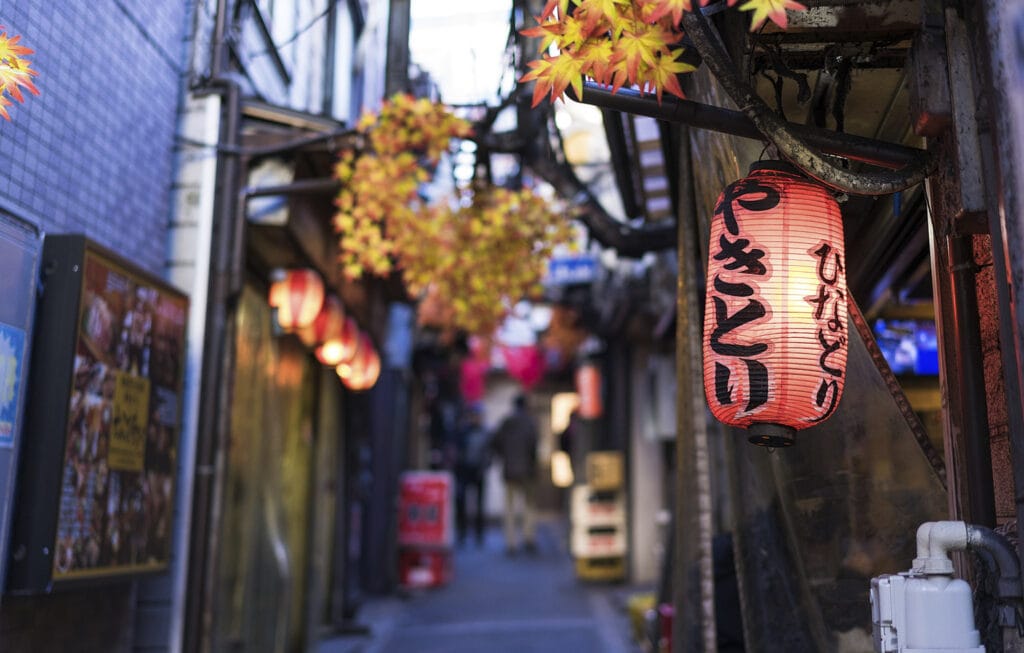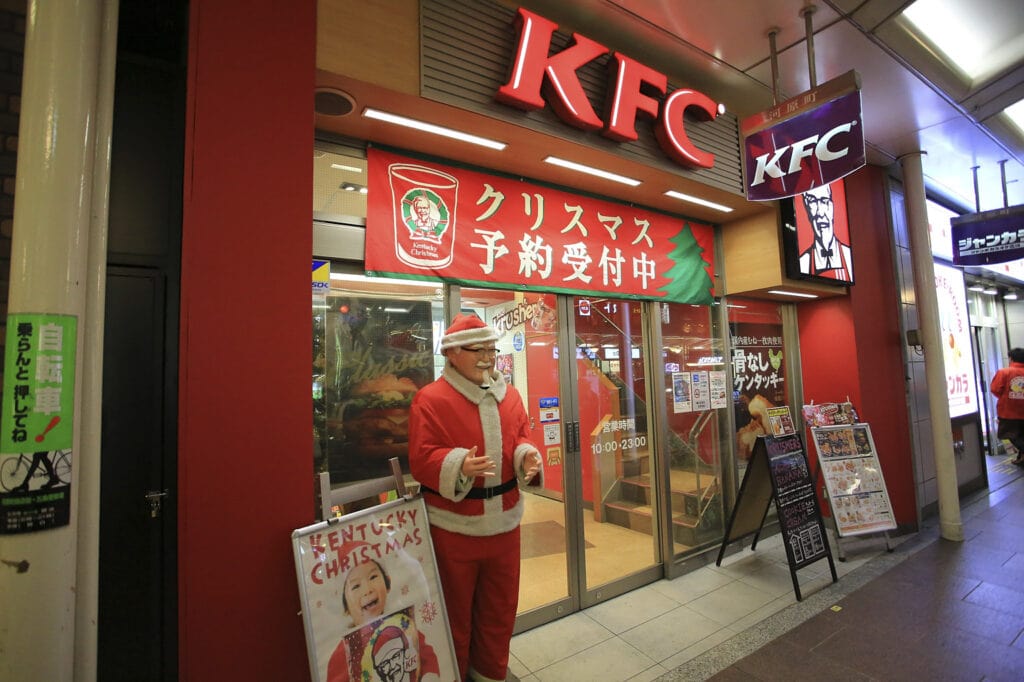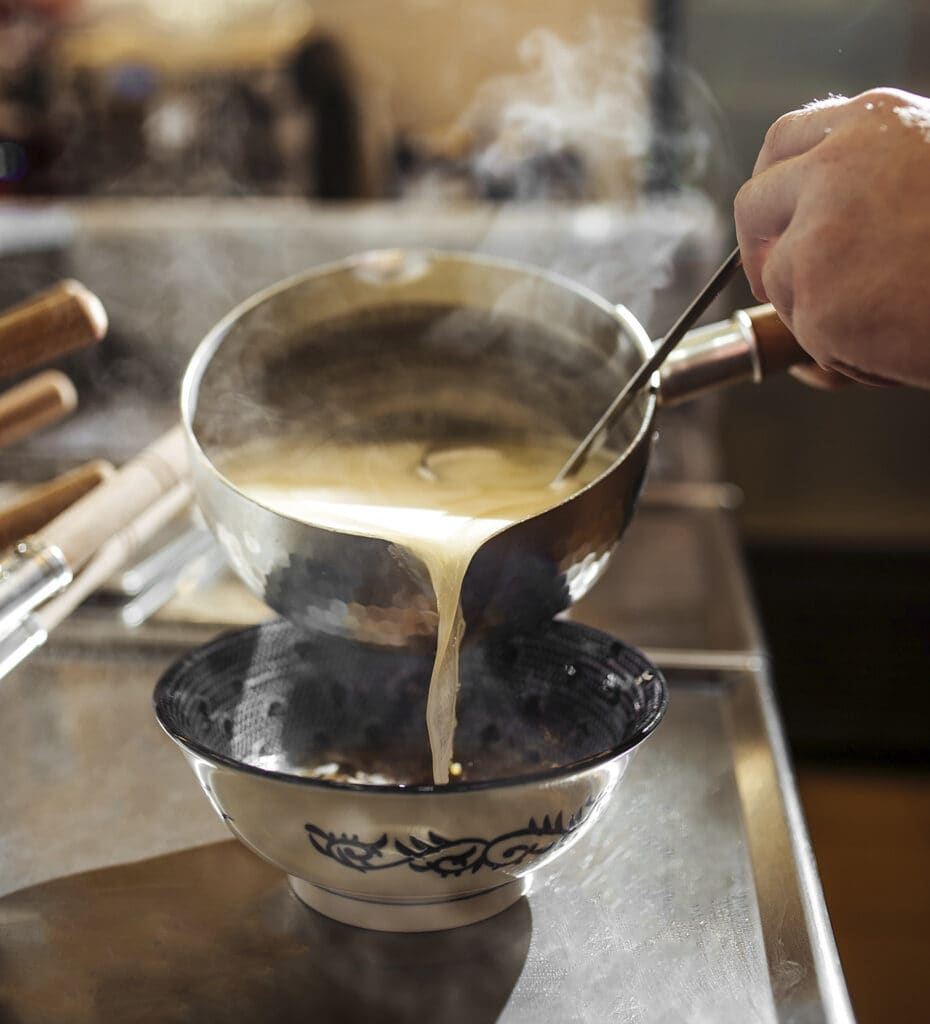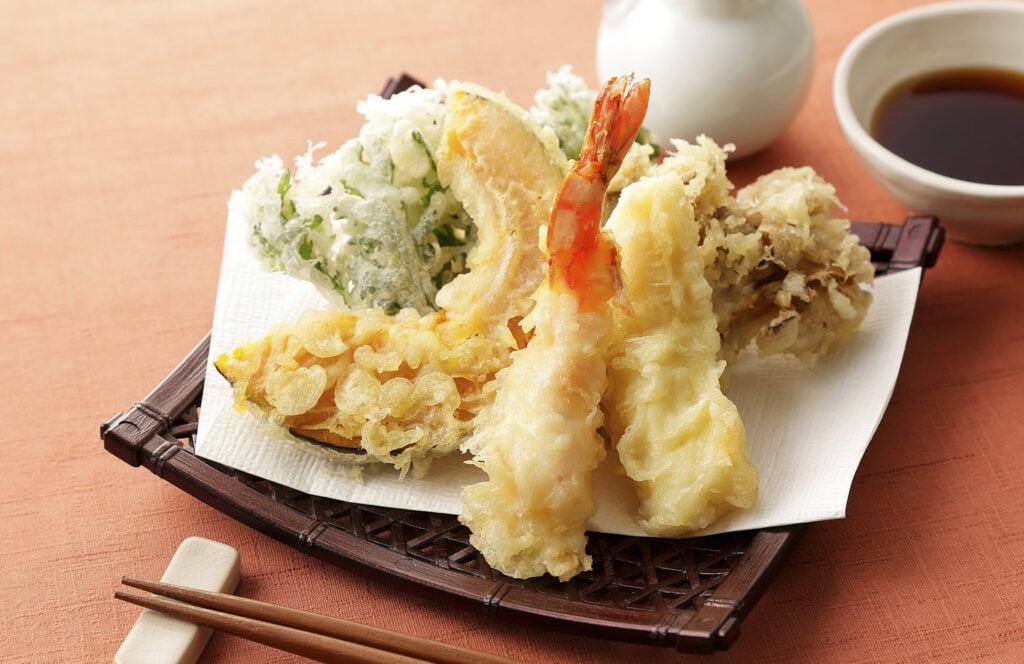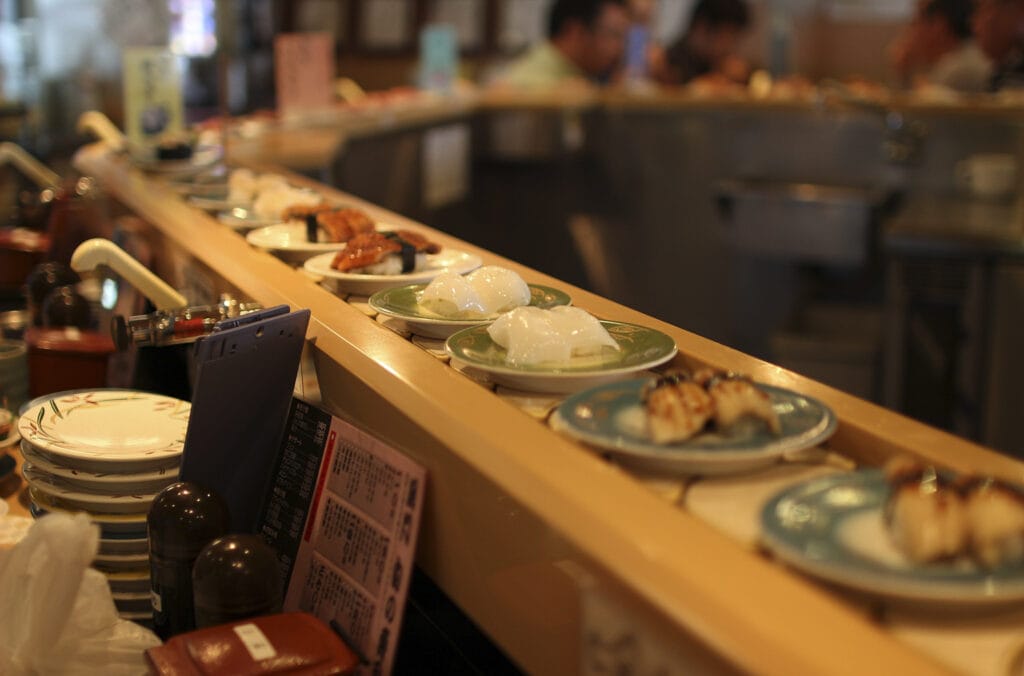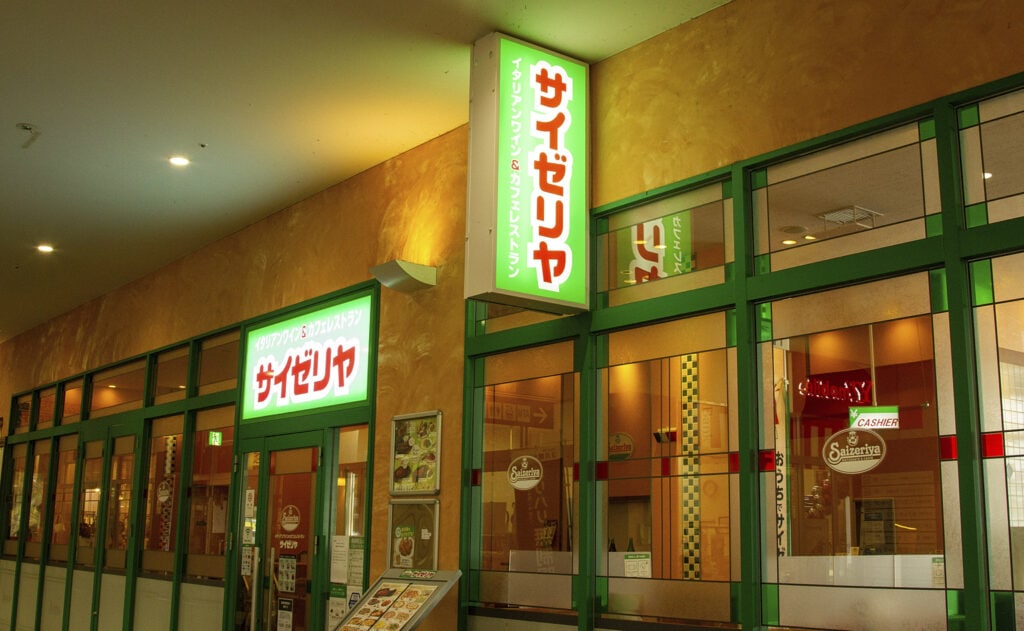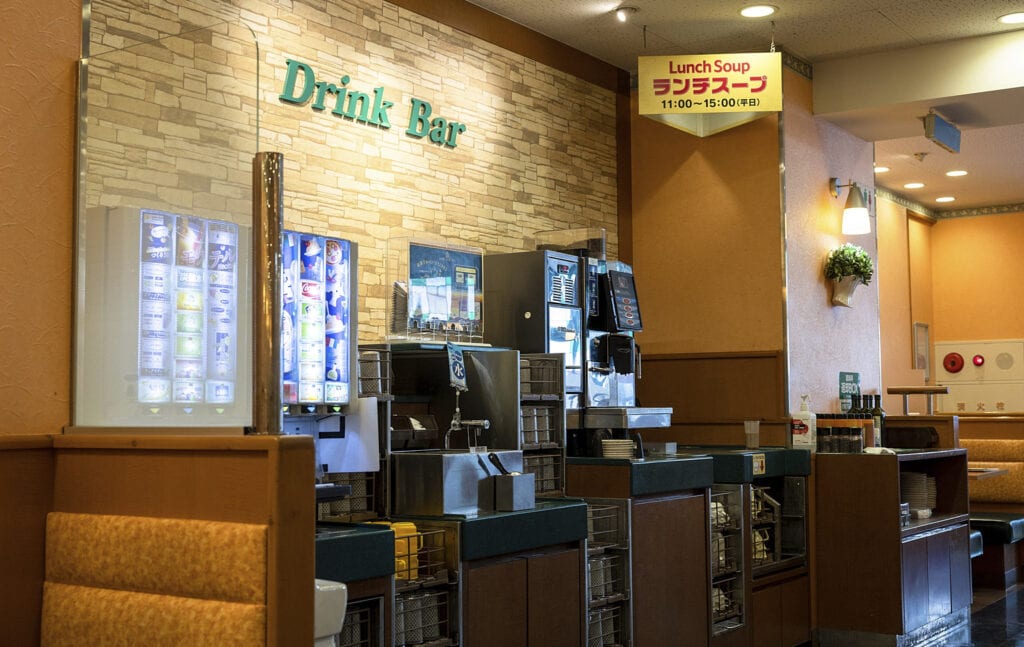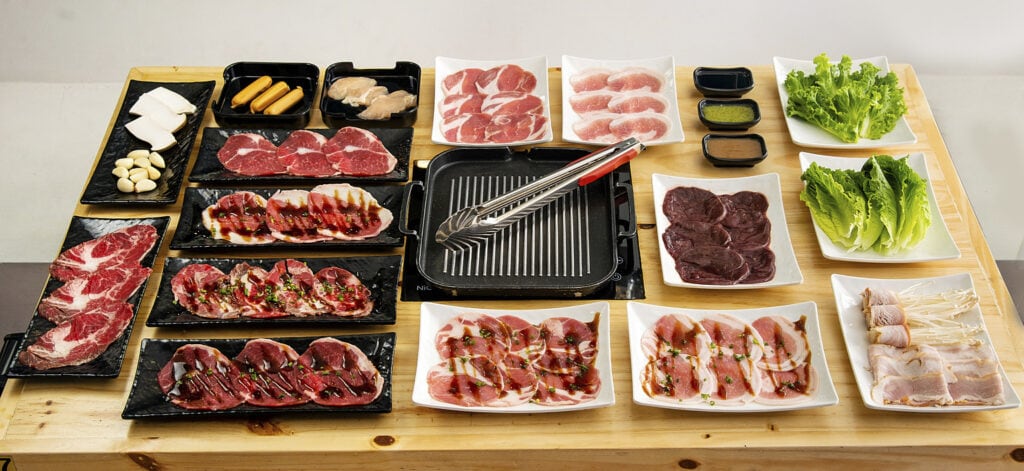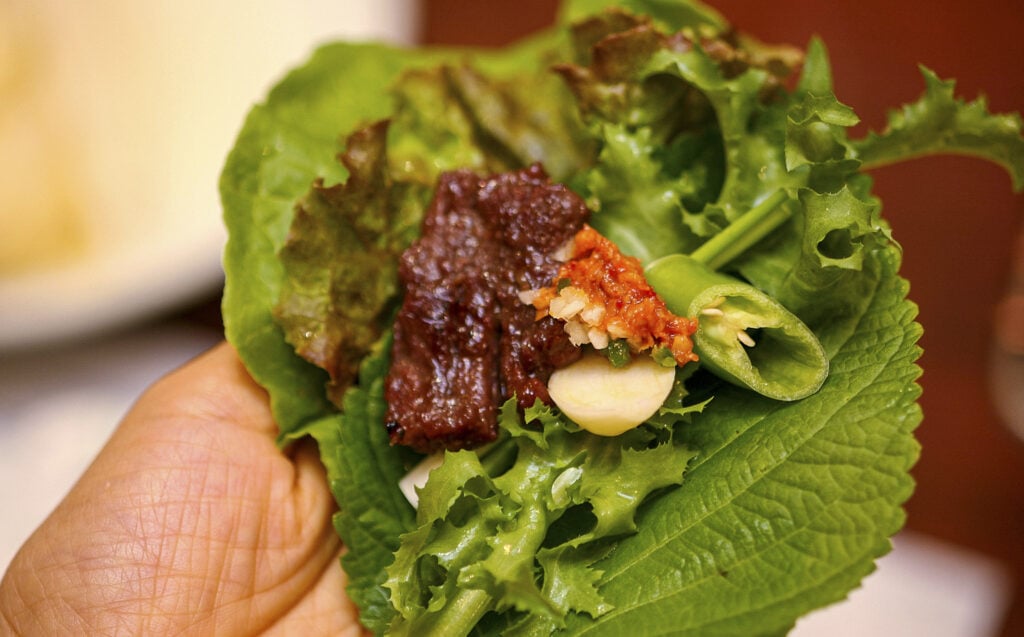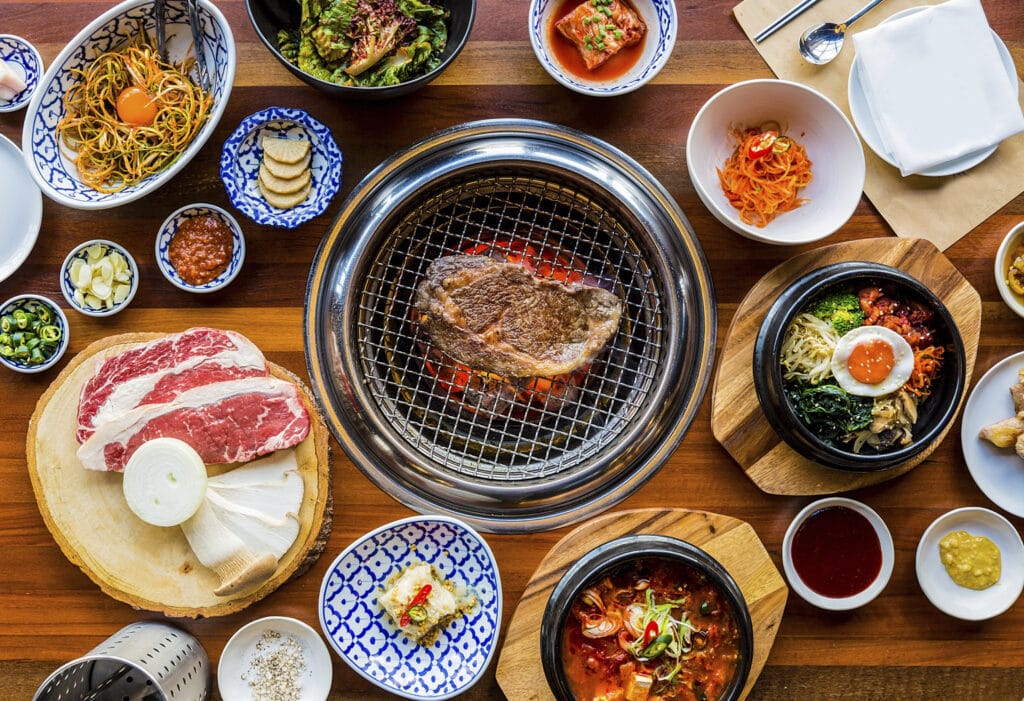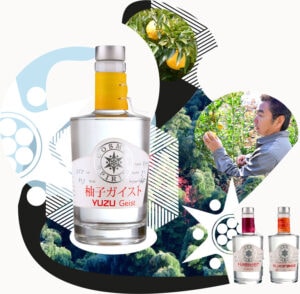Japanese cuisine - who does not think of Sushi? But in fact there is much more.
As a traveler, it's easy to get overwhelmed in Japan: What exactly do the restaurants offer? What types of restaurants are there, and who serves what exactly? Often, the name of the restaurant already tells you what dishes they offer.
From Germany, you are probably used to restaurants offering a wide variety of dishes.
In this country, i.e. in Germany, we are mainly familiar with all-rounders: Chinese restaurants strive to show the entire range of northern Chinese or southern Chinese cuisine.
Italian restaurants entice with menus that have entire sections of "pasta," "pizza," "ensalata" and the like.
And also from the Japanese cuisine in Germany one is used to the fact that a "Japanese" restaurant usually includes sushi, but also quite often various other dishes.
Not least we ourselves had our Restaurant sansaro in Munich was initially built and opened as a pure sushi restaurant, and then gradually added individual hot dishes for those who do not want to eat sushi. That we are today known for fine Japanese ("warm") cuisine of a high standard, in addition to consistently high-quality sushi, is by no means a matter of course.
Japanese cuisine is highly specialized
In Japan, things are somewhat different from what we know from Germany. Menus that resemble an encyclopedia in their scope are rare.
It is true that there are rather broad restaurants here as well. However, the majority of restaurants are specialized. Ideally, you know exactly what you want to eat before you visit - because the restaurant is chosen according to the type of dish you feel like. The choice of dishes in these restaurants is very limited, there are usually only dishes of a certain type. Fans of manga and anime know this: in Ramen-ya there is only noodle soup, in Yakiniku-ya you eat grilled meat.
The preparation of food is art and craft
The reason for the strong specialization of the restaurants lies in the treatment of the food. In Japan, it is considered a high art to precisely work out the very own taste of each individual food and to integrate it into a dish in the best possible way. This requires a great deal of expertise and specialist knowledge. The training of chefs is geared accordingly.
Japanese cuisine vs. foreign cuisine
Japan also has Chinese restaurants, Italian tavernas, Spanish restorantes, Thai cuisines and more. These restaurants fall into two categories: We find all-rounders, as we know them here in Germany, too. And we find restaurants that are adapted to Japanese customs and offer only a few dishes. These restaurants are usually run by people from the respective countries whose cuisine they represent. The chefs have enjoyed appropriate training in their home countries.
These restaurants are generally considered family-friendly. Often, the menu features special dishes for children that are less "exotic" (by Japanese standards) and offer smaller portions. These country cuisines should be evaluated differently than Japanese restaurants, which are the subject of this article.
What is a ramen-ya?
Literally translated, a ramen-ya (らあめん屋) is a ramen merchant. Because the character 屋 (read: ya) means as much as store or store - just like in our company name. SUSHIYA, here analog for sushi.
Ramen refers to wheat noodles served in a broth with lots of toppings.
What is now often translated as "Japanese noodle soup" has little to do with a noodle soup as we know it from German cuisine. Freshly prepared ramen has an intensely nutty, slightly sweet taste. But the real reason to eat ramen is the broth.
The broth is prepared by each restaurant according to a secret house recipe. Meat broths (mostly pork, rarely chicken) can serve as a base, but fish or vegetable stocks are also possible. The broths are refined with salt (shio 塩) or with soy sauce (shōyu 醤油), depending on the policy of the house and/or the wishes of the guest. The ramen, or noodles themselves, are made to take as much of the flavor of the broth as possible. The broth itself may be left over, so you don't have to drink the bowl empty.
Toppings complete the dish
Toppings are placed on the ramen. Some restaurants offer ready-made combinations, while others allow diners to choose their own toppings. More is always possible, so you can order extras. Various vegetables were considered as toppings. They are served raw or steamed, boiled, fried or marinated. There are also fried toppings. Boiled or pickled egg is often found. Many ramen-ya specialize in house-style meat (usually pork, corresponding to the stock). Fish and seafood also come into question, as does nori (のり).
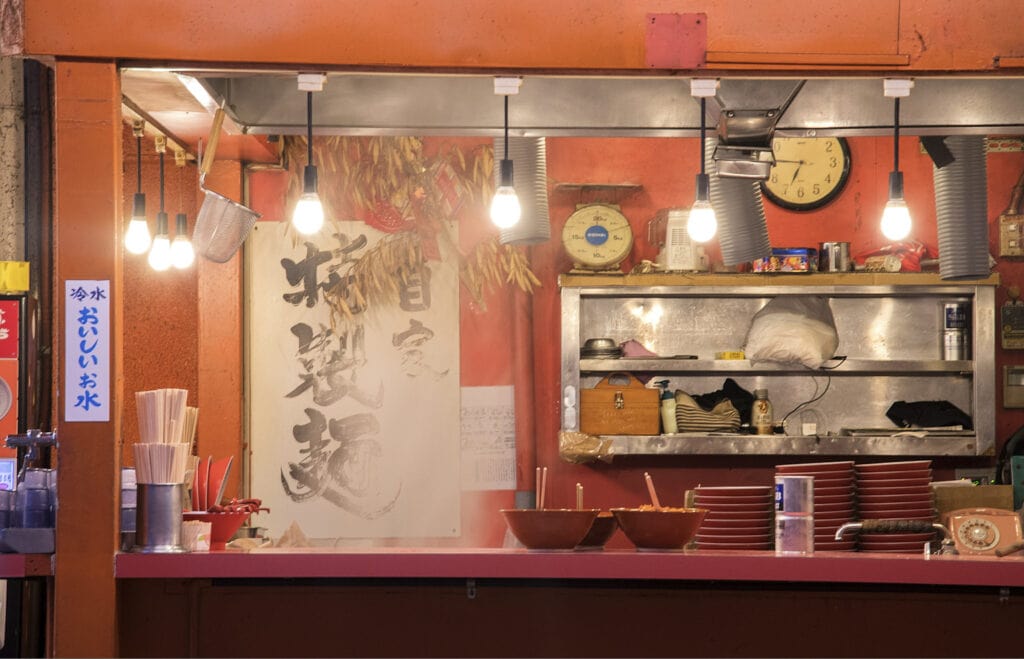
Originally not a Japanese dish
Ramen are hearty, the portions are often very large. And such a ramen bowl represents a complete meal. If you still need more, you can usually order appetizers and/or a dessert at Ramen-ya.
Ramen-ya are considered very inexpensive, judging by the size of the dishes served and the quality of the ingredients. In the big cities, you can find them mainly along the railroad lines in the immediate vicinity of the stations or directly in the station.
Originally, the wheat noodles in the hearty broth probably come from China, so it is not a genuine Japanese dish. However, this is no longer relevant today, because ramen has been assimilated. Today, they are an integral part of Japanese culture (see https://www.ntttp-db.com/post/ranking002).
Because these noodles originally came from abroad, they are often written in Japanese in the Syllabary Katakana ラーメン.
What is tempura?
Dipped in a special batter of flour, egg and ice water, fish, mushrooms and vegetables are fried in hot oil. Sprouts and leafy vegetables can also be made into tempura (天麩羅).
In restaurants specializing in tempura, a soup and a bowl of rice are served as standard. Tempura is ordered individually, in one or two pieces at a time, depending on taste. The focus of the restaurants is on seasonal and regional ingredients, so the menu of tempura restaurants changes monthly and seasonally.
Set or to taste - tempura can be individual
Many tempura restaurants offer ready-made sets assembled in the kitchen, consisting of three to eight pieces of fried side dishes plus rice and soup. However, there is always the possibility to compose a menu yourself according to the currently offered side dishes. There is no fixed price for this on the menu. Instead, there are movable boards at the counter, on which the currently available seasonal offers are listed, along with the cost per item.
Tempura tastes best when freshly prepared. Therefore, as a guest, you always order each piece individually. It is also possible to order several pieces, which are then served one after the other. In this case, the order depends on the workflow in the kitchen.
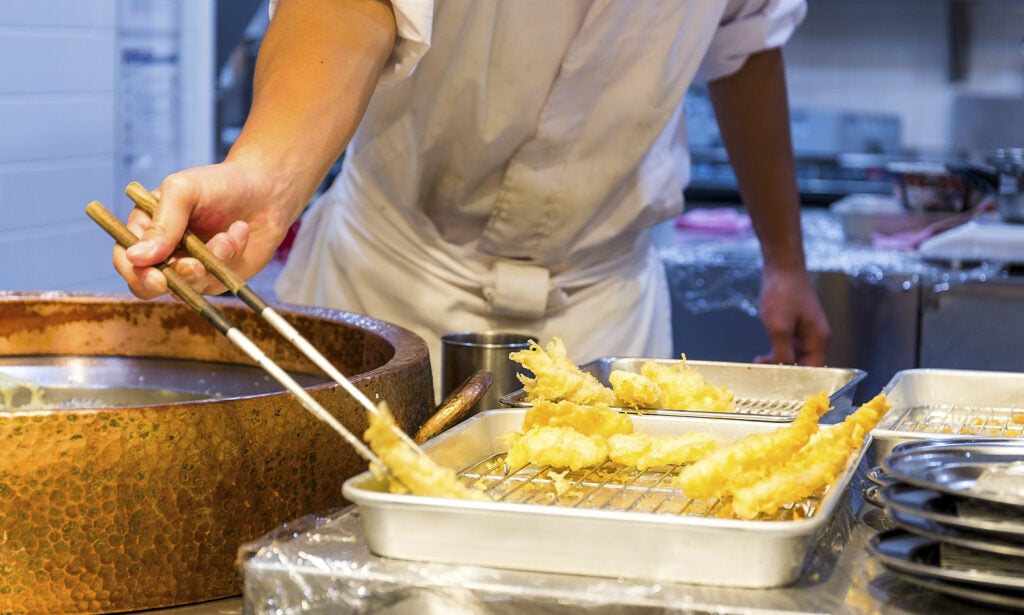
Tempura originates from the colonial era in the original
Japan was never colonized. But during the centuries of great conquests, Portuguese ships came to Asia, including Japan. And the Portuguese left their traces in the Land of the Rising Sun. Tempura is one of these traces: the Jesuit missionaries prepared tempura in Japan in the 16th century.
Presumably, the name "tempura" derives from the Latin word "tempora", which translates as "times". The "tempora" of the Portuguese monks were the fasting periods during which they were not allowed to eat meat. To this day, meat tends not to be used for tempura (see http://iroha-japan.net/iroha/B02_food/20_tempura.html).
For tempura there is a Japan a variety of spellings (てんぷら / 天ぷら / 天プラ / 天麩羅 / 天婦羅).
Synonym for Japanese cuisine: sushi
Sushi (寿司) is the symbol of Japanese cuisine. But how Japanese is sushi actually?
As a method of preserving freshwater fish, sushi probably originated somewhere along the Mekong River. Over the centuries, the dish came to Japan via the various regions in China and developed there into a mixture of vinegar-soured rice with fish, seafood and various vegetables or egg as a topping. At least, that's what we think of as "sushi" today. Also Nori, without which sushi would be unthinkable today, came along very late.
Put simply, the sushi we know today is a product of the 20th century. Nigiri sushi does not have a long tradition in Japanese cuisine (see https://cuisine-kingdom.com/sushistyle-history/), but today it is considered the classic Japanese style.
Sushi-ya - a classic sushi restaurant
Sushi is not usually prepared at home in Japan, apart from temaki (手巻き). Sushi is expensive, even in restaurants. There are two types of sushi restaurants: sushi-ya (鮨屋) and kaiten-zushi (回転寿司).
In Sushi-ya the guest sits at the table or at the counter and gets the dishes individually prepared by a sushi chef. You can order whatever you feel like. Often, however, the exact composition is left to the chef. Each individual course is a treat for all the senses. This is perhaps even more true with sushi than with other Japanese dishes: Japanese eat with their eyes.
Who wants to keep the price of such a menu in the frame, names the sushi chef an amount that should not be exceeded. The composition of the menu will then be within the specified limits, you will certainly be full. Sushi is considered an art. With this form of meal, one recognizes the sushi chef as an artist and trusts his judgment completely.
Kaiten-Zushi - modern fast food assembly line restaurants
Kaiten-Zushi is the less expensive way to enjoy sushi in a restaurant. In these restaurants, the guest sits directly at the counter. A conveyor belt is embedded in the counter, onto which the kitchen repeatedly places small plates, each containing one to six pieces of sushi. The guest takes whatever he or she feels like from the delicacies that pass by. Kaiten-zushi has not been around for very long, because for a long time sushi restaurants were a male-only domain and therefore not accessible to large parts of the Japanese population (cf. https://www.apamanshop.com/column/post-47955/).
Settlement is made at the end of the meal according to the number of small plates that have accumulated on the guest's place. The plates are either different colors or otherwise marked with the price. Occasionally, you'll find "All You Can Eat" deals. In that case, a fixed price per person applies. But even in this case, the drinks are still charged individually.
What makes the Family Restaurant so special?
Restaurants in Japan are not necessarily geared toward children. Often the concept is geared toward adults, especially for prestigious gatherings such as business dinners. The working population, especially the gentlemen, are supposed to be able to relax over a meal in the evening after work. This orientation is reflected in the composition of the dishes as well as in the decor of the various restaurants and the prices.
If you want to eat out with the family or simply spoil the kids, choose a family restaurant (ファミリ・レストラン). These restaurants can be specialized (Kaiten-Zushi is family-friendly, for example), but there are also all-rounders. Often there is a special children's menu. This consists of a small bowl of soup with kid-friendly ingredients, a small bowl of rice, kid-friendly side dishes, a sweet dessert, and a toy. You could call it the "Happy Meal" of family restaurants.
Family restaurants are very popular in Japan. The annual restaurant rankings show which of the numerous chains is currently popular (cf.
https://ranking.net/rankings/best-family-restaurants). So this is by no means a niche phenomenon.
Bamiyan, Saizeriya, Tonkatsu Wake: Specialized Family Restaurants
Children are usually a bit headstrong when it comes to food. They have distinct preferences. Interestingly, there are dishes that almost all children like - and this is also the case in Japan. Family restaurants take this into account. Typical chains that have now also established themselves in various other Asian countries are Bamyian (ばみやん, Chinese-inspired cuisine, many ramen dishes), Saizeriya (サイゼリヤ, pasta, pizza and Italian-style rice casseroles) and Tonkatsu Wako (トンカツわこ, tonkatsu dishes, a kind of Japanese version of schnitzel).
Dorinku Baikingu: Flat rate for drinks
In Japan, people don't linger long in restaurants; instead, they take their meal and make room for the next guest. Family restaurants may be an exception, because here you can stay longer, as long as you still have a drink, for example.
While in Germany drinks must always be ordered and paid for, in Japan a glass of water or a bowl of tea is part of the service to the guest. These are placed in front of each guest without being asked and free of charge when the order is taken. In inexpensive restaurants, pots of chilled water or hot tea are available so that diners can serve themselves. These complimentary beverages can be refilled at no extra charge. In more upscale restaurants, the service staff makes sure that the glasses and bowls do not remain empty. Other drinks, however, are subject to a charge, as in Germany.
A special feature of the Family Restaurants is the Drink Viking (ドリンクバイキング). This is a kind of self-service drink bar. If you don't want to drink "tap water", you pay a flat fee at the Family Restaurant and you can serve yourself at this bar as he or she wishes. Alcoholic beverages are not available, and the Viking is designed to be kid-friendly. In addition to colorful sodas, colas and fruit juices, hot beverages are also available. The cost of this family-friendly "All You Can Drink" is kept within limits and is usually the equivalent of less than five euros.
What is Teishoku?
In Japan, teishoku (定食) is an inexpensive meal consisting of miso soup (味噌汁), a bowl of rice, pickled vegetables (漬物, tsukemono) and other side dishes. Meat or fish are also included (see https://kome-academy.com/teishoku_library/).
Teishoku can be European-inspired, in which case they are called Yōshoku (洋食) dishes. At about 1,000 yen (the equivalent of about 7 euros), teishoku is an inexpensive way to enjoy high-quality menus.
Many restaurants, including family restaurants, offer teishoku in different versions. However, there are also restaurants that specialize in teishoku without further specification. The Ōtoya and Yayoiken chains are particularly well known (see https://www.yayoi-us.com/about).
You'll always get your fill at Teishoku. As a rule, rice can be reordered as often as you like. That is free of charge. Sometimes this also applies to the soup or salad. This is also often the case at family restaurants.
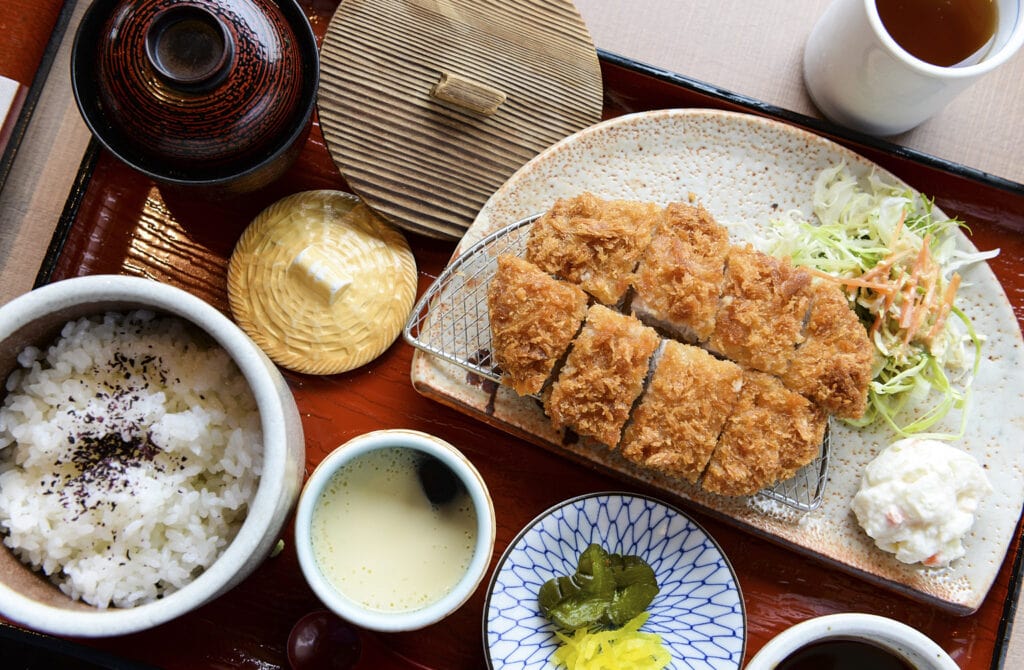
What is Yakiniku?
If you translate the term "yakiniku" literally, it means grilled meat. At first glance, this seems to be a contradiction to Japanese cuisine, which tends to be low in meat. In fact, however, it fits very well into the understanding of a respectful approach to food.
Yakiniku-ya (焼肉屋) have a special facility. Namely, there are small grills embedded in the tables. For the special aroma of the grilled meat specialties, there may be a bowl with charcoal. A distinction is made between yakiniku, which is prepared on a net or grate over charcoal, and teppan-yaki (鉄板焼き). The latter means grilling on a steel plate (usually gas grill).
A yakiniku menu includes the obligatory bowl of soup, a bowl of rice, and pickled vegetables or a salad. Rice can usually be reordered free of charge.
What is grilled, each guest prepares himself at the table. Orders are placed individually. Yakiniku-ya usually offer beef from different cuts, different quality levels play just as important a role as the origin of the meat. Pork and poultry are also part of the range, and various vegetables complement the dishes (see https://wa-magazine.com/food/yakiniku/yakiniku-knowledge/). So these are by no means pure meat meals, even if the name might suggest that.
As with everything in Japan, there is a ranking that is regularly updated. This makes it easy to see which cuts of meat are particularly popular. It is not really known whether people order one type of meat or another particularly often because, according to the ranking, they are currently popular, or whether the ranking independently represents what is popular (cf.
https://www.moranbong.co.jp/jang/yakiniku/detail/id=4299).
Korean BBQ was the inspiration
Yakiniku-ya are particularly proud of their special sauces, marinades and spice mixtures. These are not only mixed together according to a secret house recipe, but are usually also quite spicy. Chili and various types of pepper play an important role. Kimchi is often served as well. This is no coincidence: the model for yakiniku can probably be found in Korean BBQ. The origin cannot be denied in the appetizers served and the tsukemono, which can often be put together individually.
Often no lunch
Many yakiniku-ya open only in the evening. Meat is often thought of in Japan along with beer and stronger alcoholic beverages - yakiniku-ya are no exception. Here you can often find the staff of companies eating together after work, as well as business companies.
Great variety especially in specialization
If you're interested in current developments in upscale cuisine, you may have noticed: In Germany, too, the trend in recent years has been increasingly toward specialized restaurants. The focus is shifting toward regionality and seasonality of the food processed. This brings us closer to the Japanese understanding of "good cuisine".
It is probably precisely the strong specialization of Japanese cuisine that has produced the high degree of artistry that we associate with Japanese cuisine. The enormous respect for every single food, the special treatment of every single ingredient - an all-rounder's cuisine cannot even achieve that.
We therefore urge every traveler to Japan: Let yourself be seduced. Every dish deserves to be enjoyed in a specialized restaurant.
Sources used and further information:
https://de.wikipedia.org/wiki/Japanische_K%C3%BCche
https://www.japan.travel/de/de/japanische-kueche-und-gerichte/
https://www.japan.travel/de/de/japan-reise-blog/ramen/
https://www.japan-talk.com/jt/new/japanese-restaurants
https://www.japan-guide.com/e/e2036.html
https://we-xpats.com/en/guide/as/jp/detail/6726/
https://ramenyokocho.com/ramenhistory
https://www.mentalfloss.com/article/642293/ramen-history
https://restaurants-guide.tokyo/column/yakiniku-grilled-meat/
https://www.japan.travel/en/ph/guide/yakiniku/
https://restaurants-guide.tokyo/column/teishoku-the-foundation-of-japanese-style-meals/
Click on the button below to download the content from cotoacademy.com.
https://jw-webmagazine.com/history-of-sushi/
https://guide.michelin.com/hk/en/article/features/tempura_en
https://www.bbc.com/travel/article/20170808-the-truth-about-japanese-tempura
Click on the button below to load asahiimports.com content.
https://www.japan-experience.com/plan-your-trip/to-know/japanese-food/family-restaurants
https://tokyotreat.com/blog/japans-family-restaurants-eat-your-way-through-them
https://www.raumen.co.jp/rapedia/study_history/
Click on the button below to load the content of news.1242.com.
http://iroha-japan.net/iroha/B02_food/20_tempura.html
https://www.showa-sangyo.co.jp/enjoy/encyclopedia/01/
Click on the button below to load cuisine-kingdom.com content.
https://www.cookdoor.jp/sushi/dictionary/21602_sushi_002/
https://www.apamanshop.com/column/post-47955/
https://www.ntt-card.com/trace/backnumber/vol10/index.shtml
https://ranking.net/rankings/best-family-restaurants
https://kotobank.jp/word/%E3%83%95%E3%82%A1%E3%83%9F%E3%83%AA%E3%83%BC%E3%83%AC%E3%82%B9%E3%83%88%E3%83%A9%E3%83%B3-370566
https://kome-academy.com/teishoku_library/
Click the button below to load the content of oggi.jp.
https://www.moranbong.co.jp/jang/yakiniku/detail/id=4299
Click on the button below to download the content of wa-magazine.com.
